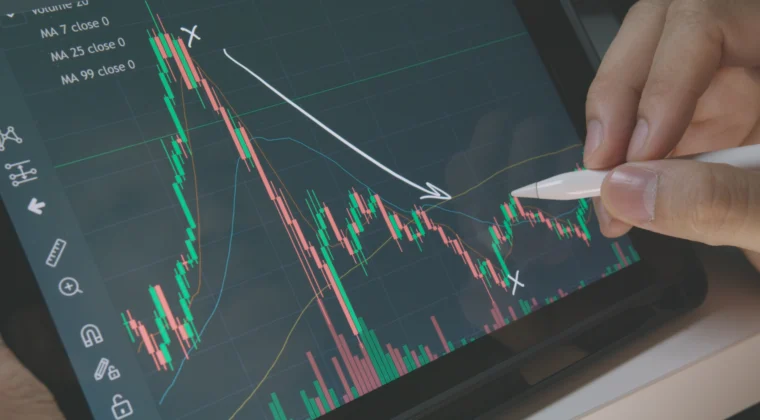
PU Prime App
Exclusive deals on mobile



PU Prime App
Exclusive deals on mobile



Indices trading can provide several benefits to traders, which includes allowing diversification of trade, access to multiple major markets and cost effectiveness. Find out exactly what indices trading is and how to trade indices in this comprehensive guide.
Indices are key indicators in the financial markets, serving as a barometer of the performance of specific groups of stocks, bonds, and other financial instruments. They provide a comprehensive overview of the financial health of an economy and offer valuable insights into market trends. Investors trade indices frequently to assess the performance of a particular market or sector, compare the returns of different investments, and make informed buying and selling decisions. By trading indices, investors can stay up-to-date on market movements and make data-driven trading decisions.
Knowing what are some of the most traded indices is definitely beneficial for one as they embark on the journey to trading indices. The most traded indices often represent widely followed and highly liquid markets. Understanding these indices gives you a market sentiment indicator and allows you to gauge investor behaviour. They serve as barometers for the broader economy and can provide insights into market trends.
Here are some of the indices commonly traded.
These indices track the performance of a specific stock market or a segment of it. Here are some examples of stock market indices:
These indices focus on specific sectors or industries within the stock market. They provide investors with a way to track the performance of a particular sector. Below are some examples of sector indices.
Currency indices measure the value of a currency relative to a basket of other currencies. They are often used to track the strength or weakness of a particular currency. Below are some examples of currency indices.
Bond market indices measure the performance of fixed-income securities, such as government bonds, corporate bonds, and municipal bonds. Two of the most commonly bond market indices are as follows:
Commodity indices track the performance of a basket of commodities or a specific commodity market. They are often used by investors to gain exposure to commodities as an asset class. Here are three examples of commodity indices.
Volatility indices, also known as fear indices, measure the market’s expectation of volatility. The most well-known volatility index is the CBOE Volatility Index (VIX), which reflects the expected volatility in the U.S. stock market.
This type of indices provide a broad representation of multiple markets from different regions or countries. Examples of Global Indices include the following:
These are just a few examples of the most traded types of indices, and there are many more different types of indices that cater to specific investment strategies or market segments.
Check Out The Index CFDs That You Can Trade With PU Prime

In the world of indices trading, understanding how the components of an index come together is essential. As the markets are ever-changing, indices have to constantly be re-adjust to accurately reflect real-world changes.
Between indices, each one can also have different modes of calculation in order to reach an index’s value.
One prominent example is how differently the DJIA and the S&P 500 are weighted. The S&P 500 is a market-capitalization-weighted index, which means that the weighting of each stock is based on its market capitalization, or the total value of all its outstanding shares. This means that larger companies have a greater influence on the index’s performance than smaller companies.
On the other hand, the DJIA (or Dow) is a price-weighted index, which means that the weighting of each stock is based on its stock price, rather than its market capitalization. This means that stocks with a higher price have a greater influence on the index’s performance than stocks with a lower price, regardless of the size of the company. The consequence of this is that the Dow can sometimes inaccurately reflect a market’s performance, since a $5 stock increasing by $1 has the same effect on the index as a $500 stock increasing by $1.
For the U.S. Dollar Index (DXY) the components are a weighted mix of the country’s largest trading partners when the index was established back in 1973, with the only change so far being the introduction of the euro. The DXY is largely made up of the euro, which comprises 57.6% of the basket. This is followed by the Japanese yen (13.6%), British pound (11.9%), the Canadian dollar (9.1%), the Swedish krona (4.2%), and the Swiss franc (3.6%).
It’s worth noting that different indices may use different methodologies and weighting schemes. Additionally, some indices may incorporate factors other than price, such as dividends or market capitalization.

To trade indices successfully, it is important to understand the factors that move the prices of the indices. Due to the diversified nature of indices, their prices are moved by a large variety of factors:
Economic data and indicators, such as GDP, employment, inflation, and economic activity can significantly impact the prices of indices as they provide insights into the health and direction of an economy. These data points are closely monitored by market participants who form expectations about the markets based on the current economic conditions. For example, in times of too-high inflation, the general market consensus is that the central bank will raise interest rates. Since high interest rates are detrimental to the price of growth stocks, indices like the tech-heavy Nasdaq will fall.
The financial performance of the companies included in an index has a significant impact on prices of indices. For example, strong economic growth can lead to increased consumer spending and higher corporate profits. Positive earnings reports can drive investor confidence and contribute to upward movements in indices that comprise the company or companies in question, especially if said companies are heavily weighted in the index.
Economic data can have varying effects on different sectors and industries within an index. For example, an increase in oil prices might benefit energy companies but negatively impact airlines. Economic indicators like manufacturing data or housing market figures can influence specific sectors, leading to sector rotation and changes in sector weights within an index.
Changes in interest rates, monetary policy decisions by central banks, and actions taken to stimulate or tighten the economy can influence index prices. Changes in interest rates can impact borrowing costs for companies and consumer spending patterns, ultimately affecting corporate profits and economic growth. Lower interest rates generally make stocks more attractive, stimulating buying activity and potentially lifting index prices. Conversely, higher interest rates or policy actions aimed at cooling the economy can dampen investor sentiment and lead to lower index prices.
Investors closely monitor central bank announcements and economic data to gauge the future direction of interest rates. Anticipated changes in monetary policy can result in market volatility and impact index prices.
Investor sentiment and market psychology play a crucial role in index price movements. A positive market sentiment indicator, driven by factors such as strong economic data, corporate earnings, or favourable geopolitical developments, can boost investor confidence and result in increased buying activity and increase in indices prices. Conversely, a negative market sentiment indicator stemming from economic uncertainties, geopolitical tensions, or market volatility can lead to selling pressure and downward movements in the price of certain indices.
Read More Trading News On PU Prime’s Daily Financial News
Geopolitical events, such as elections, political instability, trade disputes, or geopolitical tensions, can create volatility and impact index prices.
Investor flows, such as buying or selling activity by institutional investors, hedge funds, or retail investors, can affect prices of indices. Large inflows or outflows of capital can create imbalances in supply and demand, leading to price movements. Market liquidity, or the ease of buying or selling securities, also influences index prices. Lower liquidity can result in wider bid-ask spreads and increased price volatility.
These are some of the most important factors, but there are many other factors that can impact the price of indices, including global economic conditions, monetary policy, and technological innovations.

Trading indices offer several advantages, making it an appealing option for investors. Learn the top reasons why trading indices can be a lucrative and versatile strategy below.
When trading indices, individuals have the flexibility to take both long and short positions. Going long refers to buying an index with the expectation that its price will rise, allowing traders to profit from upward movements. Conversely, going short involves selling an index with the anticipation that its price will decline, enabling traders to profit from downward movements. This dual ability to trade in both directions provides opportunities to benefit from market trends, regardless of whether the overall market is rising or falling.
Traders often trade indices through contract for differences (CFDs) as it allows them to amplify their market exposure through leverage. Leveraged trading enables traders to control a larger position in the market with a relatively smaller amount of capital. For example, if a broker offers 1:100 leverage, a $1,000 investment can provide exposure to $100,000 worth of an index. This amplification of trading power enhances profit potential, but also increases the risk of losses.
Understand More About Leveraged Trading And Margin Requirements
Trading indices allows for diversification across multiple stocks or sectors, reducing the risk associated with investing in individual companies. Indices typically consist of a basket of stocks or instruments, representing a broader market or a specific sector. By trading indices, you reduce the volatility associated with a single asset like a stock.
Whether you’re a seasoned trader or a beginner, exploring the world of index trading can offer many opportunities. Trade indices today to capitalise on market trends and optimise your investment strategies.

To trade indices, you can follow these steps:
1. Choose the best broker for indices. Select a reputable and regulated online broker like PU Prime that offers CFDs on indices.
2. Open a trading account: Fill out the necessary documentation and complete the account opening process.
3. Fund your account: Transfer money into your trading account to use as margin for trading CFDs.
4. Research the market: Stay up-to-date on market news and developments that may affect prices of indices. You might also want to use technical analysis in order to find suitable entry or exit points on your trade.
5. Place an order: Choose your desired index, decide whether to go long (buy) or short (sell), and place a trade using the indices trading platform.
6. Monitor your trade: Keep track of your open position and make adjustments as needed based on market conditions.
7. Close the trade: Decide when to close your trade and take profits or cut losses, based on your market analysis and trading strategy.
At PU Prime, you can choose to trade diversified portfolios of global indices like U.S. Dollar Index (USDX), Nikkei 225, and EU50 in the form of CFD trading, which means not owning the assets and trading solely the price action of the indices. PU Prime offers leveraged trading for these indices which allow you to amplify your potential gains with a lower trading cost needed because indices are based on a basket of stocks.
Find Out More About CFD Trading And How To Trade CFD
Similar to other trading instruments, it is important to remember that in indices trading involves risk, and you can potentially lose money. Hence, it is important to read up more online educational resources on indices trading to help yourself understand the market before you trade indices. Other than PU Prime’s trading blogs, you could also check out PU Prime’s newly launched animation video tutorials on CFD trading to understand how you could trade indices on CFDs to help enhance your financial trading journey.
Start Indices Trading With PU Prime’s Live Account

以行业低点差和闪电般的执行速度交易外汇、指数、贵金属等。
Please note the Website is intended for individuals residing in jurisdictions where accessing the Website is permitted by law.
Please note that PU Prime and its affiliated entities are neither established nor operating in your home jurisdiction.
By clicking the "Acknowledge" button, you confirm that you are entering this website solely based on your initiative and not as a result of any specific marketing outreach. You wish to obtain information from this website which is provided on reverse solicitation in accordance with the laws of your home jurisdiction.
Thank You for Your Acknowledgement!
Ten en cuenta que el sitio web está destinado a personas que residen en jurisdicciones donde el acceso al sitio web está permitido por la ley.
Ten en cuenta que PU Prime y sus entidades afiliadas no están establecidas ni operan en tu jurisdicción de origen.
Al hacer clic en el botón "Aceptar", confirmas que estás ingresando a este sitio web por tu propia iniciativa y no como resultado de ningún esfuerzo de marketing específico. Deseas obtener información de este sitio web que se proporciona mediante solicitud inversa de acuerdo con las leyes de tu jurisdicción de origen.
Thank You for Your Acknowledgement!